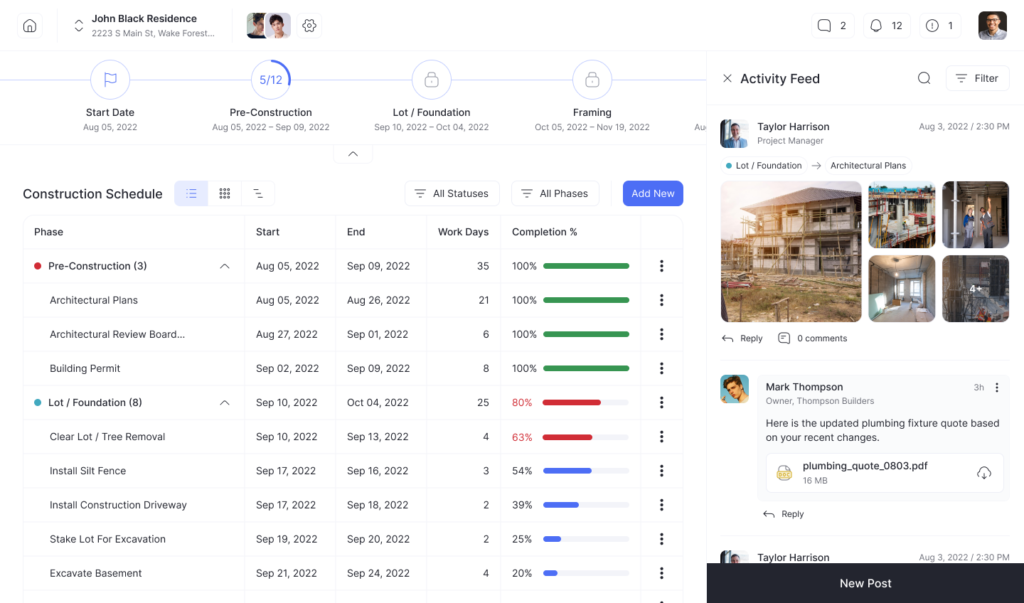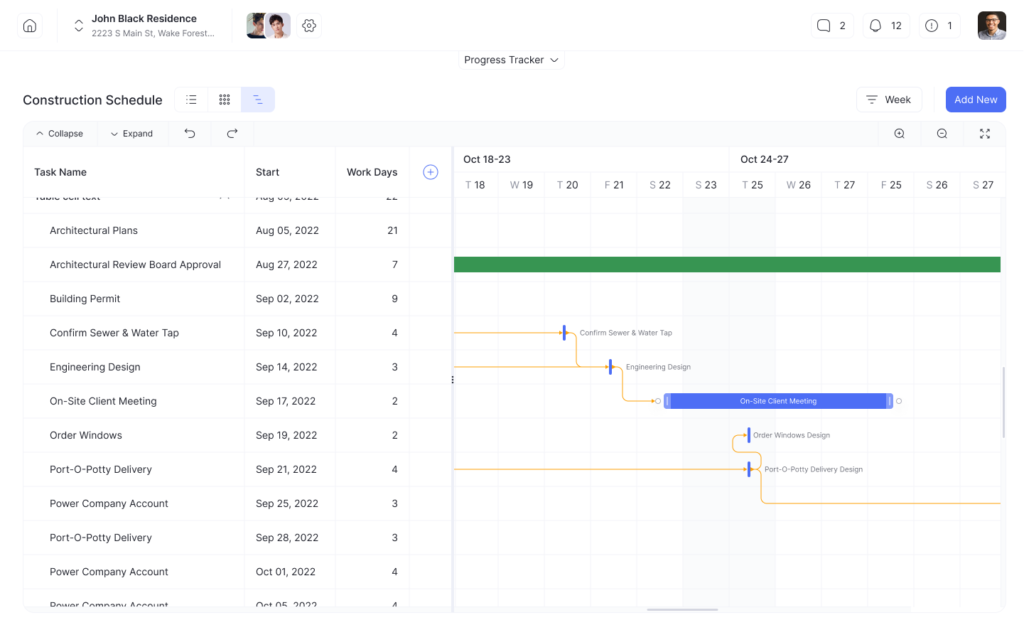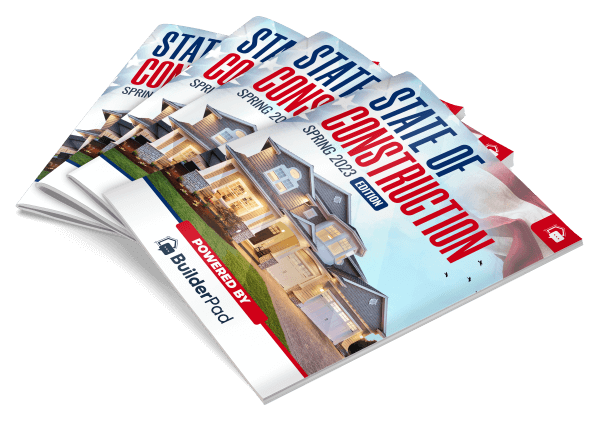In the dynamic and often complex world of construction management, trust is the cornerstone of any successful project.
This trust is cultivated through transparency in all processes, ensuring that clients are not just observers but active participants in their project’s journey.
The construction industry, traditionally veiled in technicalities and specialized knowledge, is undergoing a transformative shift towards openness and clarity.
This article delves into the importance of transparency in construction management and how it can be effectively implemented to build stronger client relationships and drive project success.
In this era of digital advancement, the need for transparency has become more pronounced, as clients demand more insight into the projects they invest in.
Bridging the gap between client expectations and project realities is a crucial aspect of modern construction management.
The Importance of Transparency in Construction Management

Transparency in construction management goes beyond mere openness. It involves a strategic and systematic approach to sharing information, decisions, and progress with clients.
This practice has several key benefits:
Enhanced Client Trust and Satisfaction
Clients who are kept in the loop at every stage of their project feel more valued and involved. This level of involvement fosters trust and increases overall satisfaction with the process, leading to better client relationships and repeat business.
Transparency also helps in managing client expectations, ensuring that they have a realistic understanding of project timelines, costs, and potential challenges. This clarity reduces misunderstandings and builds a stronger foundation for long-term partnerships.
Improved Project Outcomes
When clients are well-informed, they can make timely and more effective decisions. Transparent communication helps in identifying and resolving issues early, reducing the risk of costly delays or redesigns.
Additionally, this transparency fosters a collaborative environment where clients and construction teams can work together towards innovative solutions, enhancing the overall quality and efficiency of the project.
Clear communication channels allow for the swift adaptation to changes, keeping the project agile and responsive.
Greater Accountability
Transparency holds all parties accountable for their roles and responsibilities. It establishes clear benchmarks and performance metrics, leading to higher quality work and adherence to project timelines.
This accountability is not just limited to the construction team but also extends to the clients, who become more engaged and responsible for timely decisions and approvals.
Furthermore, this level of accountability fosters a culture of integrity and ethical practices, which is fundamental in an industry often marred by challenges related to trust and reliability.
Strategies for Ensuring Transparency

To achieve transparency in construction management, several strategies can be implemented:
Utilizing Technology
Construction management software and apps have revolutionized the way information is shared and managed. These tools provide real-time updates, track changes, and facilitate communication between clients and the project team.
The integration of technologies like cloud-based construction management platforms enables a more collaborative and transparent approach to project management. Builderpad provides a set of productive tools ensuring the communication is streamlined and everyone is updated:

Moreover, these technological solutions empower clients to access project information anytime and anywhere, increasing their sense of control and involvement.
Regular Reporting and Meetings
Scheduled reports and meetings are crucial for keeping clients informed. These should cover project progress, budget updates, and any challenges faced. The key is to maintain a consistent schedule and format for these updates.
In addition to regular meetings, impromptu sessions can be held to address urgent matters, ensuring that clients are always aware of significant developments.
Digital tools can also be used for virtual meetings, making the communication process more flexible and accessible, especially for clients who cannot be physically present at the site.
Involvement in Decision-Making

Clients should be involved in key decision-making processes. This includes choices related to design, materials, and any significant changes to the project scope or timeline.
Inviting clients to participate in planning sessions and workshops can further enhance this involvement, giving them a platform to express their views and preferences.
Such collaboration not only improves project outcomes but also helps in building a rapport and understanding between the clients and the construction team, fostering a sense of mutual respect and partnership.
Clear Documentation
Maintaining clear and detailed documentation of every aspect of the project is vital. This includes contracts, change orders, project plans, and communication records.
These documents should be easily accessible to all relevant parties, ensuring that there is a single source of truth that can be referred to at any time.
Effective documentation also plays a critical role in risk management, providing a historical record of decisions and actions taken throughout the project lifecycle.
Overcoming Challenges in Transparency
While the benefits of transparency are clear, implementing it can come with challenges:
Managing Information Overload
There is a fine line between sharing necessary information and overwhelming clients with details. Finding the right balance is crucial.
Construction managers need to discern what information is essential for the client to know and present it in an easily digestible format.
This can be achieved through summaries, visual presentations, and prioritizing information based on its impact on the project.
Builderpad’s scheduling feature can visualize and simplify the construction schedule and keep everyone informed:

Protecting Sensitive Information
While being open, it’s also important to safeguard sensitive data related to costs, proprietary techniques, or any confidential information. Implementing robust data security measures and clear guidelines on information
Here are some key takeaways from the article on the importance of transparency in construction management:
- Transparency through systematic information sharing fosters greater client trust, satisfaction, and involvement in projects. This leads to better client relationships and repeat business.
- Informed clients can make timely decisions, identify issues early, and collaborate with teams to innovate solutions. This improves project outcomes, quality, efficiency, and ability to adapt to changes.
- Transparency holds all parties accountable for meeting quality, timeline, and budget benchmarks. This drives integrity and ethical practices in an industry that struggles with trust and reliability issues.
- Strategies like construction software, regular progress reporting, involving clients in decisions, and clear documentation are key to enabling transparency. Digital tools increase accessibility and flexibility.
- Challenges like information overload and protecting sensitive data need to be managed by discerning what’s essential to share, summarizing details, and implementing robust security measures.
- Overall, transparency through open communication, accountability, and collaboration is crucial for construction teams to build strong client relationships, manage expectations, and drive project success in a dynamic industry.







